News
Wreck Diving in Boracay, Philippines

As a diver with a young family finding a great holiday location to suit everyone is difficult. Boracay, in the Philippines, offers a fantastic choice. It has plenty of nightlife, shopping and a variety of watersports… and most of all, it’s suitable for all age groups. It also has some fantastic artificial reefs in the form of these two wrecks:
Camia wreck, Boracay
I first visited this area a few years ago as a guest at a friend’s wedding and a few of us took some time out from the celebrations to go for a dive. The party island of Boracay is home to some great diving and the local diving industry has gone to a great deal of effort to provide a safe introduction to wreck diving.
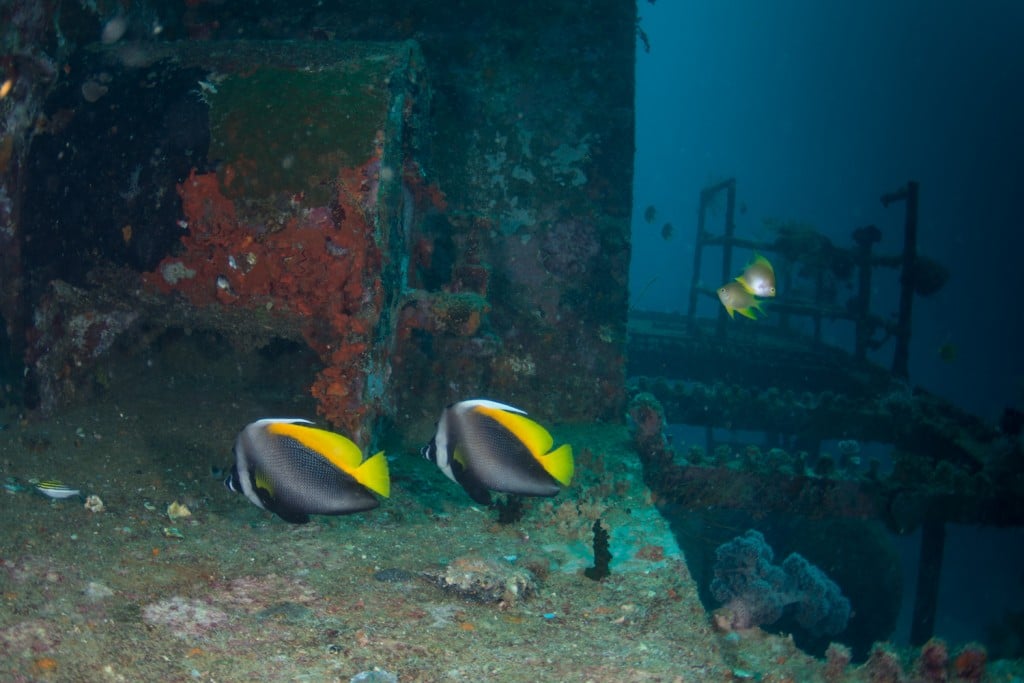
The Camia is a 30m steel-hulled cargo ship, deliberately sunk as a dive site and artificial reef in 2001. Lying on a rocky, sandy bottom in 25-30m of water it is developing nicely as home to hard coral and many species of marine life. The vessel can be penetrated however a safety line is advised as the silt can build up and visibility can go without warning if someone kicks too hard. Some entries are tight so care is needed.

Inside you will see numerous pairs of batfish and various reef fish, stonefish and scorpionfish. Look carefully and you will find pygmy seahorses. Red bass and barracuda patrol the vessel and occasionally a grey or black tip shark will make an appearance. This is a year round dive for the advanced diver, but contact a local dive guide for the best times as currents can get very strong and avoid the rainy season if possible. The dive is located between Virgin Drop and Coral Garden and is usually buoyed off.
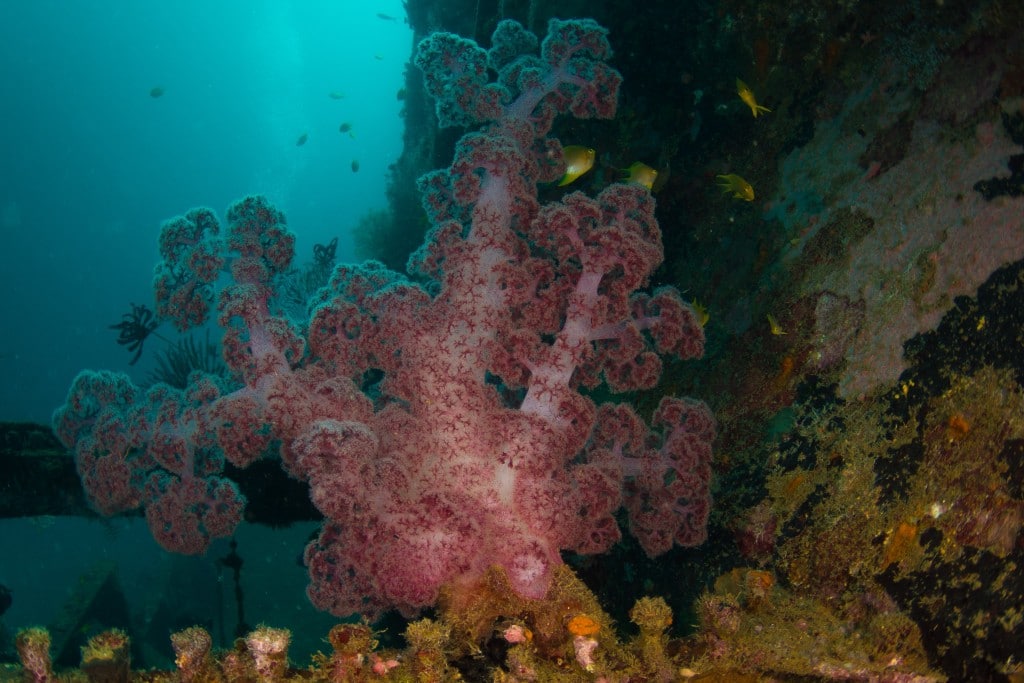
Tri-Bird wreck, Boracay
Again, the local dive industry should be congratulated… the second deliberately sunk wreck forming a new artificial reef is a plane!
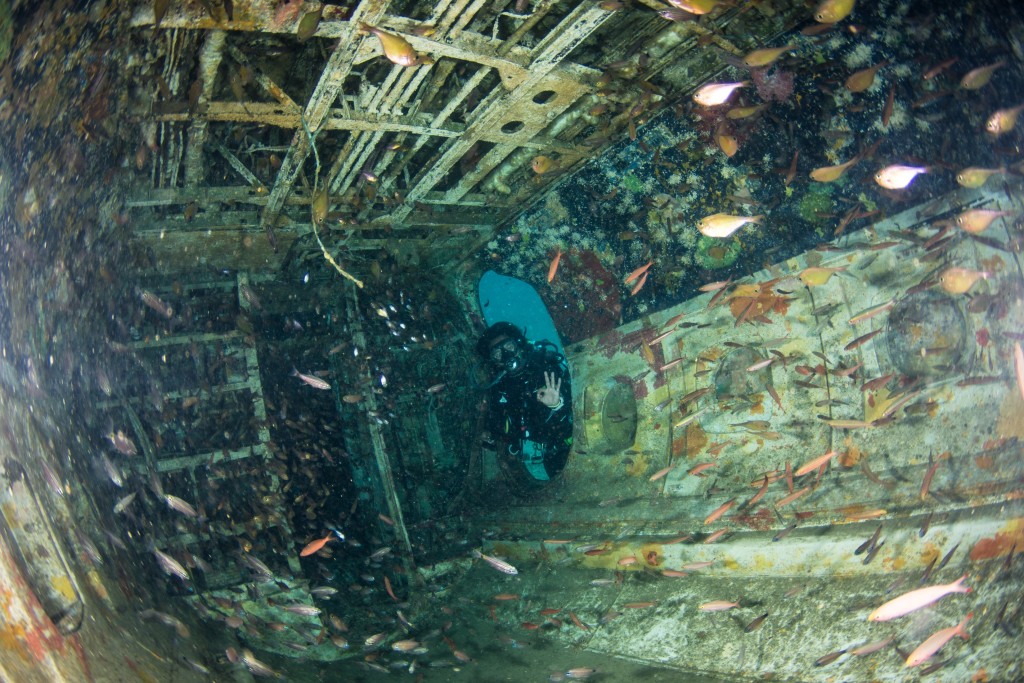
In 2009, this Russian 3 engine jet crashed on the runway at Caticlan, so it was decided in 2012 to sink it approximately 1 mile off White Beach as a dive site. It now sits upside down on a sandy bottom in 27-30m of water.
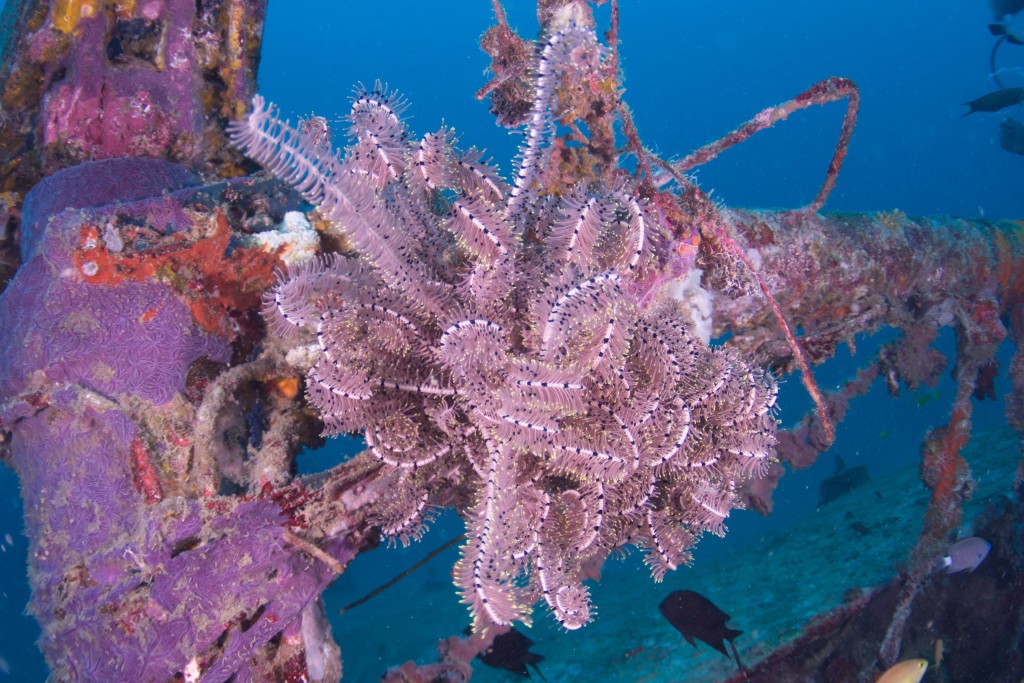
This 21m long, 25m wingspan 36 seater jet is a joy to dive; the seats are stripped out so penetration is simple and fun. If you think boats look good on the bottom, you have to see this! Patrolled by black tips if you are lucky, there are numerous reef fish in and around the plane. On the seabed, under the fuselage, you can find stonefish and scorpionfish, whilst off in the sand various rays lay watching. It is great to swim away a little, then look back to see the whole plane resting on the seabed; this offers fantastic opportunities for the photographer.
As with the Camia, this is a dive for advanced divers. Contact your local guide for the best time and to avoid the strong currents that are sometimes around the area.

This dive will certainly make an impression on you. Nitrox is available at the majority of dive operators and the standard of local dive guides is very good. Hire equipment is readily available, as is instruction with the usual agencies.
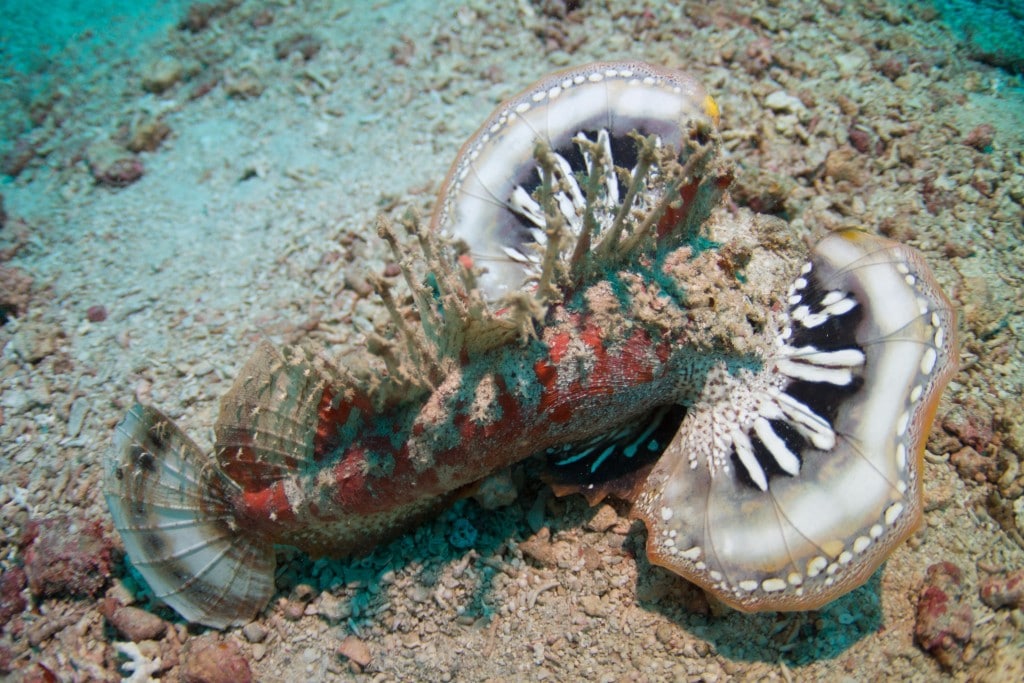
Gear News
Introducing the TR-80, IR-50 and CS-30 Regulators from DYNAMICNORD

Whether you are a beginner or a professional diver – with the three new main regulators from DYNAMICNORD, everyone will find their favourite regulator. They all look super stylish.
Excellent performance with the TR-80
Quality and performance are the be-all and end-all for regulators. It is not for nothing that the TR stands for Tec Reg. The innovative design of the TR-80 guarantees absolute reliability – even in ice-cold waters.

Perfect breathing effort at 0.8 J/l / certified for diving in waters below 10 degrees / structural design made of solid brass for best cold protection / membrane-compensated design with dry seal of the first stage / reduced exhalation effort thanks to optimized exhalation membrane and bubble deflector / adjustable Venturi (dive/predive) and adjustment knob for individual inhalation comfort / innovative design of the front cover prevents free-flow in strong currents or when diving with scooters / design made of sandblasted brass, matt chrome finish / 2 HP and 4 LP outlets / mouthpiece made of high-quality, anti-allergic silicone for maximum comfort.


Amazing underwater adventures with the IR-50
The IR-50 is the top regulator for advanced and experienced divers. Natural breathing is the essence of this regulator.

Ideal breathing effort at 0.8 J/l /certified for diving in waters below 10 degrees / compensated membrane / adjustable venturi (dive/predive) and adjustment knob for individual inhalation comfort/ outlet valve and deflector for minimum exhalation effort and reduction of bubbles on the face / design made of sandblasted brass, matt chrome finish / 2 HP and 4 NP outlets / mouthpiece made of high-quality, anti-allergic silicone for maximum comfort.


The Workhorse – our CS-30
For diving centres and diving beginners – the workhorse stands for strong construction, reliability and robustness. Perfect for your training.

Optimal breathing effort at 0.8 J/l /recommended for diving in waters above 10 degrees / non-compensated piston / adjustable venturi (dive/predive) / outlet valve and deflector for minimum exhalation effort and reduction of bubbles on the face / design made of sandblasted brass, matt chrome finish / 1 HP and 3 NP outlets / mouthpiece made of high-quality, anti-allergic silicone for maximum comfort.


Octopus OP-30
The OP-30 is the ideal addition to all DYNAMICNORD regulators. It is identical in construction to the CS-30.

The TR-80, IR-50, CS-30 (DIN & INT) regulators and the Octopus OP-30 are available from DYNAMICNORD dealers and in the online store.
DYNAMICNORD – Your Outdoor Companion.
Marine Life & Conservation
Paul Watson Released as Denmark Blocks Japan’s Extradition Bid

Renowned anti-whaling activist Paul Watson has been released from custody in Greenland after spending five months in detention. Denmark’s Justice Ministry rejected Japan’s request for his extradition, citing insufficient guarantees that his time already served in custody would be credited against any potential sentence.
The 74-year-old Canadian-American was arrested on July 21 in Nuuk, Greenland’s capital, when his ship docked to refuel. His arrest was based on a 2012 Japanese warrant related to a 2010 encounter in Antarctic waters. Japan alleged Watson obstructed operations and caused damage to a whaling research ship during efforts to disrupt illegal whaling. Watson has consistently denied these claims, maintaining his commitment to marine conservation.
Denmark, which oversees extradition matters for Greenland, concluded that while the legal conditions for extradition were met, the lack of assurances from Japan regarding time-served credit made extradition untenable.
In a video shared by his foundation, Watson expressed gratitude and relief, saying, “After five months, it’s good to be out… and good to know they’re not sending me to Japan.” He added that the most difficult part of his time in custody was being separated from his two young sons.
Watson is a pioneering figure in marine conservation, known for founding the Captain Paul Watson Foundation in 2022 after decades of activism with the Sea Shepherd Conservation Society. His bold efforts to defend marine life have earned him widespread support, including from celebrities and conservationists. His work has also been featured in the acclaimed reality TV series Whale Wars.
Watson’s lawyer, Jonas Christoffersen, praised the decision, stating, “We are happy and relieved that Paul Watson is now free.” He added that Watson is eager to reunite with his family and continue his vital work.
The arrest occurred while Watson’s vessel, the M/Y John Paul DeJoria, was en route to the North Pacific with a team of 26 volunteers to intercept a Japanese whaling ship. His foundation described the arrest as politically motivated and emphasized that Watson’s actions were focused on ending illegal whaling practices.
Japan resumed commercial whaling in 2019 after leaving the International Whaling Commission, asserting that whale meat is a cultural tradition. Conservationists, however, continue to challenge these practices, highlighting their impact on marine ecosystems.
Despite the challenges, Watson remains steadfast in his mission to protect marine life and bring attention to whaling practices. His dedication to ocean conservation has made him a globally respected advocate for the environment.
-

 News2 months ago
News2 months agoIconic SS United States to become the World’s Largest Artificial Reef
-

 News3 months ago
News3 months agoBook Review – 52 Assignments: Underwater Photography
-

 Gear News3 months ago
Gear News3 months agoDYNAMICNORD – New German diving brand enters the British market
-

 News3 months ago
News3 months agoExploring Cenote El Pit: A Diver’s Dream
-

 Gear News3 months ago
Gear News3 months agoTry BARE drysuits (and maybe even win one!) this Friday with Sea & Sea at North West Dive Fest
-

 Marine Life & Conservation3 months ago
Marine Life & Conservation3 months agoBook Review: Coral Triangle Cameos
-

 Blogs2 months ago
Blogs2 months agoDive the Egyptian Red Sea this Autumn with Regaldive
-

 News3 months ago
News3 months ago2024 Ocean Art Underwater Photo Competition Announced















